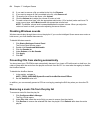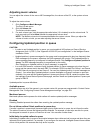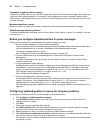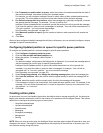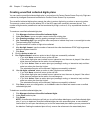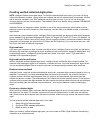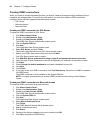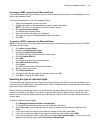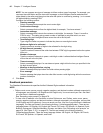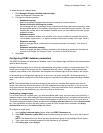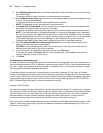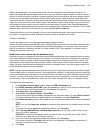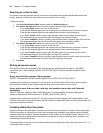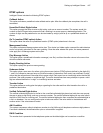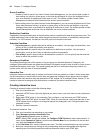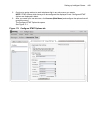442 Chapter 17 Intelligent Queue
NOTE: You can program one type of message to follow another type of message. For example, you
can team the confirmation and the instruction message, so that Intelligent Queue reads back the
digits dialed by the caller, and then gives the caller the option to continue by pressing 1, or to correct
the digits dialed by pressing STAR.
Configure the following options:
• Greeting message
Select a message that prompts the user to enter digits.
• Confirmation message
Select a message that confirms the digits dialed, for example, “You have entered...”
• Instruction message
Select a message that instructs the customer to dial digits, for example, “Press 1 to confirm,
STAR to retry.” The caller gets a preset number of attempts to retry after which, an error
message plays and Intelligent Queue moves the call to the fail path.
• Terminating digit
Type a digit the caller can press to indicate they have no more digits to enter
• Maximum digits to be collected
Type the maximum number of digits to be collected for the digit string.
• No digit timeout (seconds)
Type the number of seconds the caller has between DTMF digit keypresses before the system
times out.
• Number of attempts
Type the number of attempts to press a valid digit a caller is allowed before Intelligent Queue
moves the call to the fail path.
• Timeout message
Select a message that plays if a user does not press a digit within the time you specified in the
No digit timeout option.
• Message to be played before retrying
Select a message that plays before the caller retries pressing digits.
• Error message
Select a message that plays when the caller fails to enter a valid digit string within the maximum
number of attempts.
6. Click Save.
Readback parameters
The Readback Parameters tab specifies Verified Collected Digits readback information.
NOTE:
• Dollars, cents, euros, pence, pounds, negative numbers, and decimal numbers, although supported in
all languages, are provided in US English and UK English only. You must record your own .wav files if
you want them in additional languages.
See “Recording voice prompts” on page 478.
• To view a list of readback .wav file names, such as Dollars.wav, see “Dollars, cents, euros, pence,
pounds, negative numbers, and decimal numbers, although supported in all languages, are provided
in US English and UK English only. You must record your own .wav files if you want them in additional
languages. The files are located in the following directory: \\Voice\language\System\. There are ten
language folders: US English, UK English, NA French, EU French, EU Spanish, LA Spanish, Dutch,
Brazilian Portuguese, Simplified Mandarin Chinese, and Italian. See “Recording voice prompts” on
page 478. (See Table 17-10).” on page 479. The files are located in the following directory:
\\Voice\language\System\. There are seven language folders: US English, UK English, NA French,
EU French, EU Spanish, LA Spanish, and Dutch.



